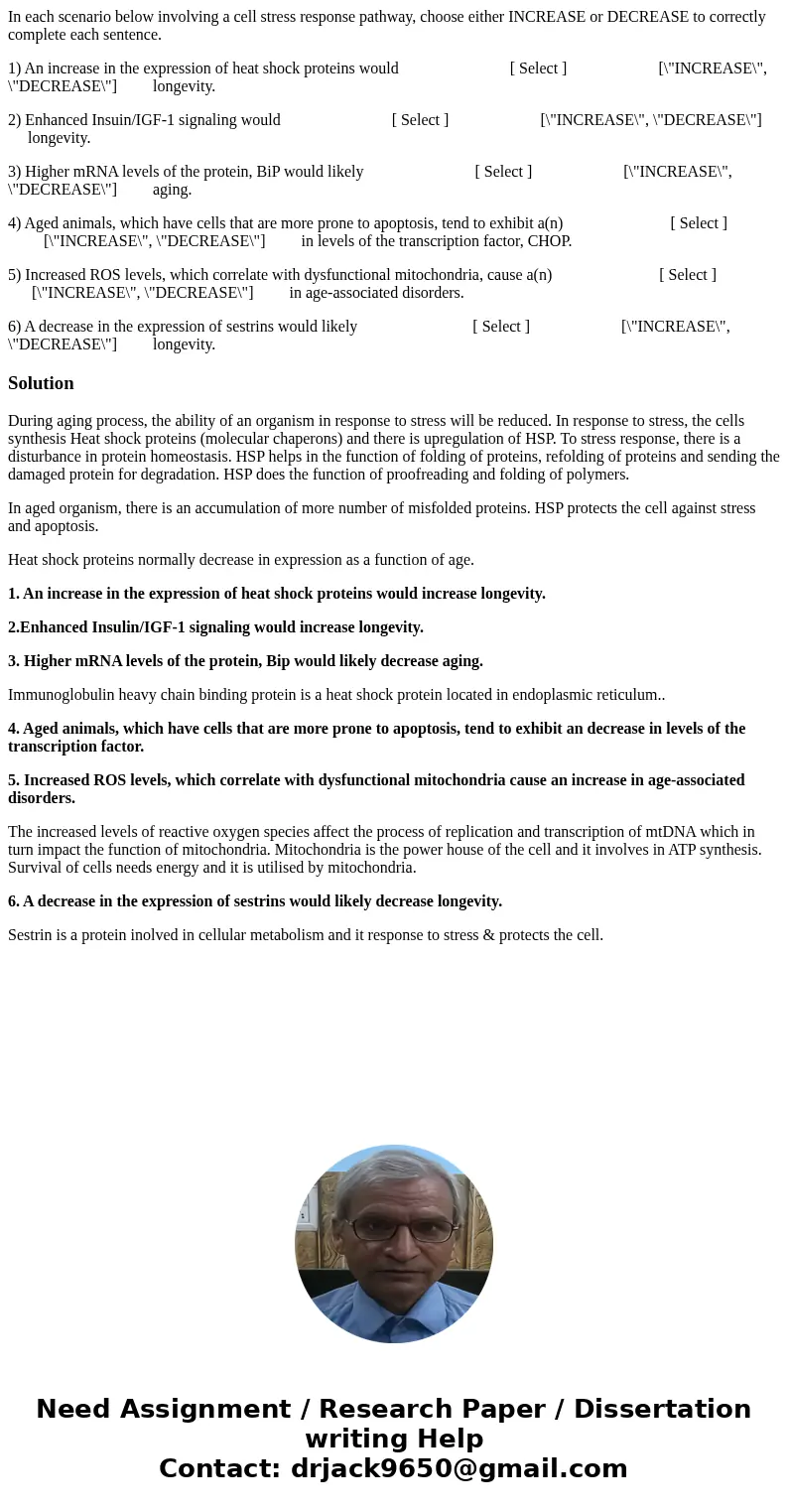In each scenario below involving a cell stress response path
In each scenario below involving a cell stress response pathway, choose either INCREASE or DECREASE to correctly complete each sentence.
1) An increase in the expression of heat shock proteins would [ Select ] [\"INCREASE\", \"DECREASE\"] longevity.
2) Enhanced Insuin/IGF-1 signaling would [ Select ] [\"INCREASE\", \"DECREASE\"] longevity.
3) Higher mRNA levels of the protein, BiP would likely [ Select ] [\"INCREASE\", \"DECREASE\"] aging.
4) Aged animals, which have cells that are more prone to apoptosis, tend to exhibit a(n) [ Select ] [\"INCREASE\", \"DECREASE\"] in levels of the transcription factor, CHOP.
5) Increased ROS levels, which correlate with dysfunctional mitochondria, cause a(n) [ Select ] [\"INCREASE\", \"DECREASE\"] in age-associated disorders.
6) A decrease in the expression of sestrins would likely [ Select ] [\"INCREASE\", \"DECREASE\"] longevity.
Solution
During aging process, the ability of an organism in response to stress will be reduced. In response to stress, the cells synthesis Heat shock proteins (molecular chaperons) and there is upregulation of HSP. To stress response, there is a disturbance in protein homeostasis. HSP helps in the function of folding of proteins, refolding of proteins and sending the damaged protein for degradation. HSP does the function of proofreading and folding of polymers.
In aged organism, there is an accumulation of more number of misfolded proteins. HSP protects the cell against stress and apoptosis.
Heat shock proteins normally decrease in expression as a function of age.
1. An increase in the expression of heat shock proteins would increase longevity.
2.Enhanced Insulin/IGF-1 signaling would increase longevity.
3. Higher mRNA levels of the protein, Bip would likely decrease aging.
Immunoglobulin heavy chain binding protein is a heat shock protein located in endoplasmic reticulum..
4. Aged animals, which have cells that are more prone to apoptosis, tend to exhibit an decrease in levels of the transcription factor.
5. Increased ROS levels, which correlate with dysfunctional mitochondria cause an increase in age-associated disorders.
The increased levels of reactive oxygen species affect the process of replication and transcription of mtDNA which in turn impact the function of mitochondria. Mitochondria is the power house of the cell and it involves in ATP synthesis. Survival of cells needs energy and it is utilised by mitochondria.
6. A decrease in the expression of sestrins would likely decrease longevity.
Sestrin is a protein inolved in cellular metabolism and it response to stress & protects the cell.

 Homework Sourse
Homework Sourse